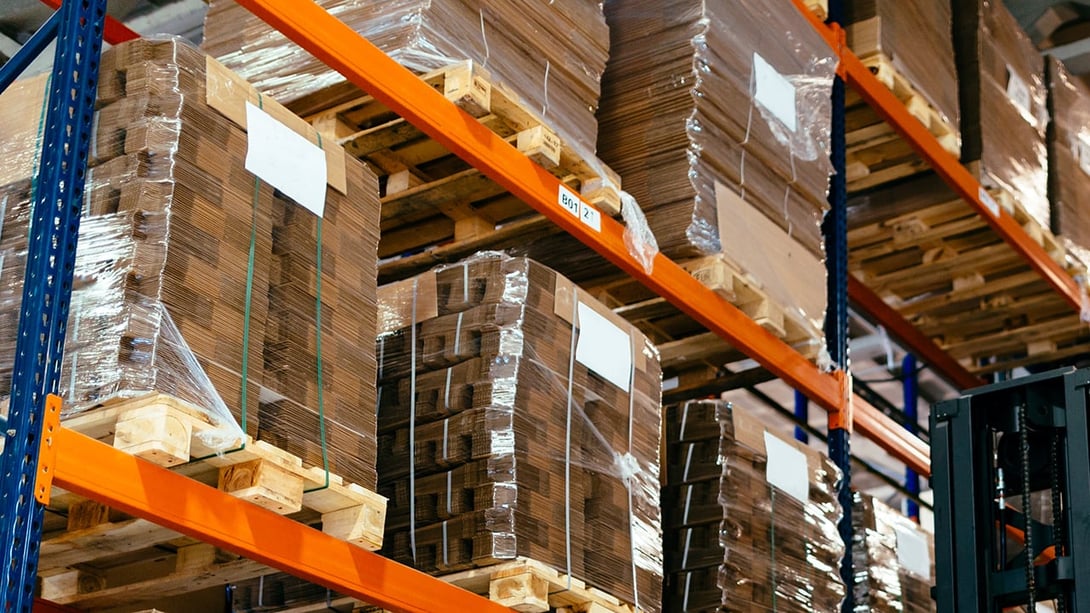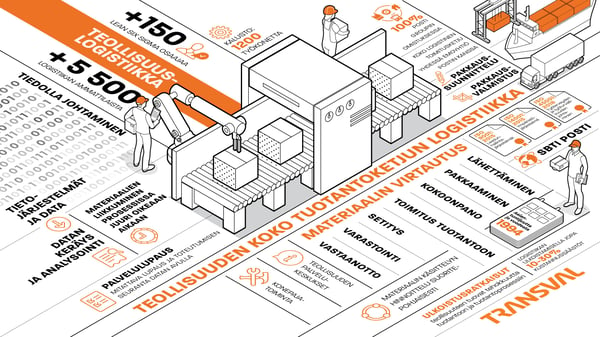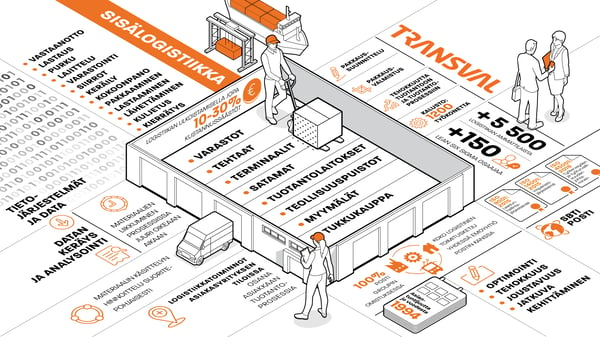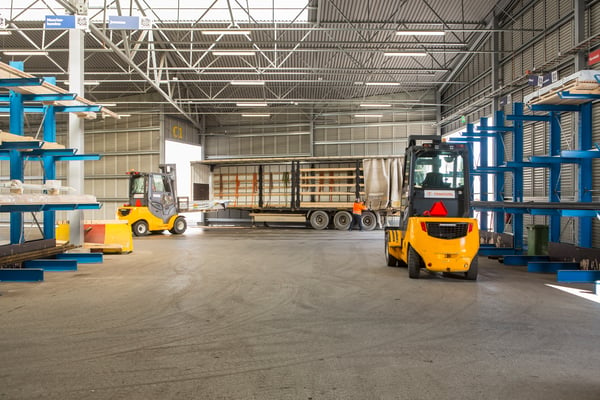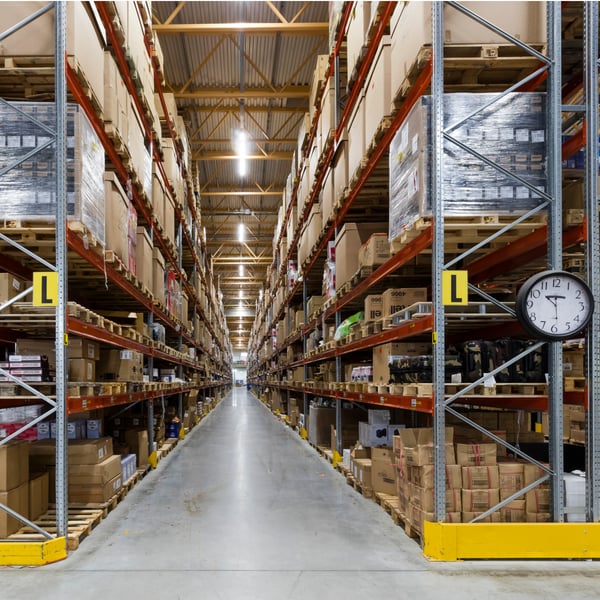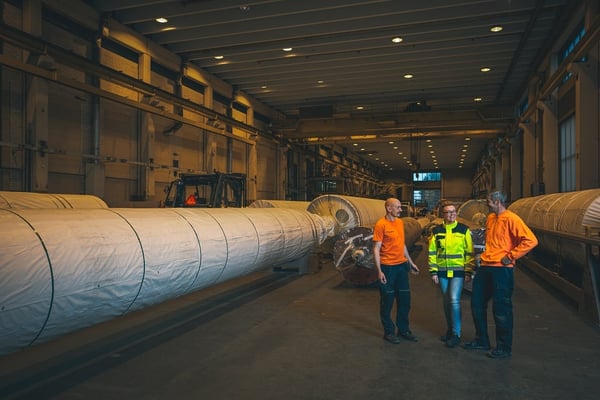What is the current state of logistics operations and what is the potential for development?
We are renewing the governance system, how will the operational changes it enables be implemented?
We are running out of space, can a change in layout get more goods into the same square meters and what will it cost?
We are expanding into new premises, how should material flow and warehouse solutions be implemented?
For Toni Heikkinen, Transval's Development Manager, various change situations are commonplace. "Right now, I'm leading a project for a client to harmonize the warehouse processes of group companies. First we study and measure the current situation, then we make proposals for new material flow and process descriptions. During the implementation phase, we will tender for the necessary supplies and manage the start-up of the new model."
Professionals help to reduce the payback time for change
Logistics functions need to be able to change in line with production changes, digitalization and customer needs. Scalability is important in such an upturn, cost-effectiveness and measurability always are. Development always starts with understanding the current situation and defining objectives. The next step is to make profitability calculations. Heikkinen goes on to explain the basics of a good development project and measures:
"Of course, there must be a payback period and indicators for the measures; projects should not be started for the sheer joy of development, but should result in a measurable benefit."
Performance evaluation is not something that should be done for the sake of a project, but rather for the sake of the results.
Transval has assessed the development potential of logistics operations in a wide variety of environments. There have been small machine shops, retail warehouses and factories using automation. "If the operations are not looked at right at the moment, regardless of the customer's industry and size, cost savings can usually be found just by standardising the operating environment and tweaking the layout. It is only when you look at the flow and the proportion of unproductive work that you start to see potential."
Lean Six Sigma: Why and when to use statistical methods for process improvement?
Today's processes generate endless amounts of data and without a sophisticated data collection and analysis system, only a fraction of that data can be exploited. Six Sigma's statistical mathematical methods are able to extract variation, recurrence, causality and anomalies from the data mass that cannot be detected without these methods. By identifying these phenomena and understanding their impact, the process can be improved on the basis of the measured data.
"In many cases, the standard deviation is more relevant than the mean in eliminating errors and time wastage. We have the software and the know-how to do the analysis, and one of the privileges of working in the development department is to see things that others can't," laughs Heikkinen, diving back into the world of 3D floorplans for his latest project.
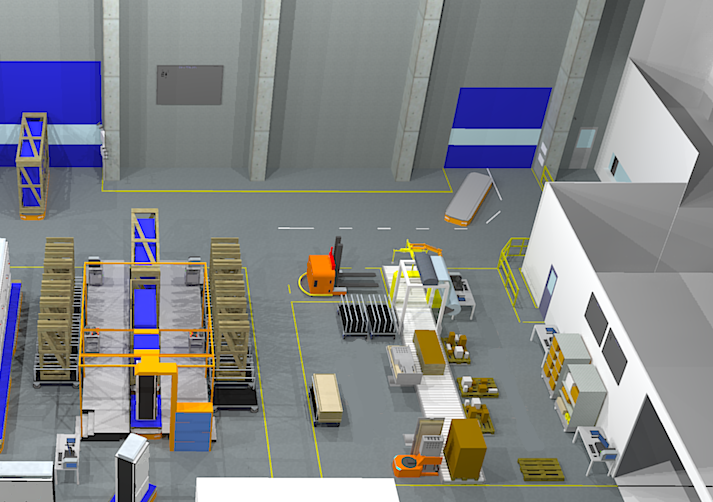 Layout plan -Example of a 3D layout plan
Layout plan -Example of a 3D layout plan
Solutions from a practitioner
Transval has invested heavily in Lean Six Sigma expertise in recent years, and the organization has experts from Green belts to Master Black belts. We carry out our development projects both in collaboration with our existing clients and as stand-alone specialist projects, providing a practical and straightforward service.
In addition to process and value stream mapping updates and measurement, the processes managed by Finland's largest in-house logistics company are subject to day-to-day audits, training and familiarization, and occupational safety risk assessments. Work research, export packaging development, equipment optimization, testing of new ideas and tools are also close to our hearts. Of course, all our know-how is also available to our customers.

